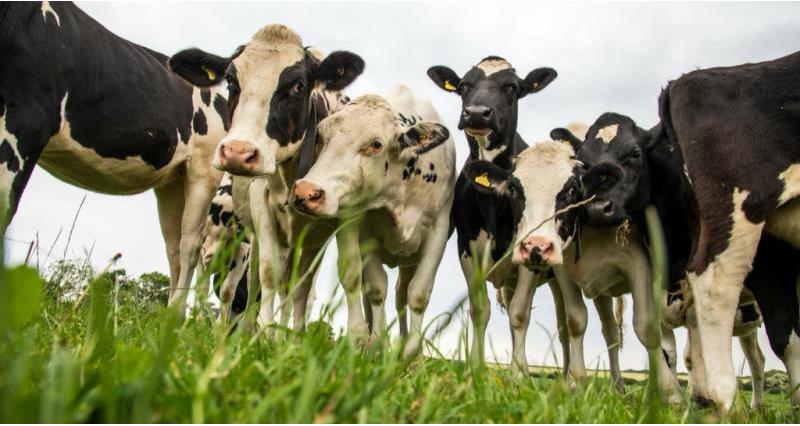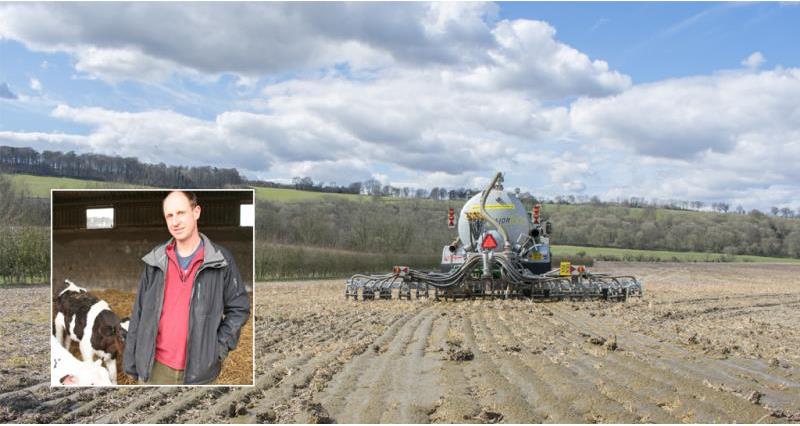He writes:
A short while ago, I was asked by the NFU if we could host the air quality department from Defra for a farm visit. Of course, I said, ‘Yes’ and quickly sat down to swat up on belching cows, methane emissions, climate change and how the dairy industry is - or isn’t - hastening the end of the world as we know it.
A week or so later, I had a quick chat with [NFU chief dairy adviser] Sian Davies to get some more details, only to be shocked that the whole event was to be spent discussing ammonia. When I think of ammonia, my first thoughts go to either fertiliser or something that you use to keep kitchen surfaces clean.
I had no idea that it was high on the agenda in government departments to reduce ammonia emissions and I certainly had no idea that the scientists are pointing at the dairy industry as one of the biggest offenders.
Anyway, on further investigation, I found that ammonia is indeed a big deal for a couple of reasons.
Firstly – public health. Ammonia has a high capacity to combine with other pollutants to create very small particles, which can be highly harmful to the lungs when inhaled.
Secondly, atmospheric ammonia is on the rise, with a major amount coming from urea excreted by dairy cows.
So, the Defra team arrived – promptly at 11am – for the meeting. It was held in our newly converted 18th century barn which we use for corporate events – or as someone described it ‘a perfect venue for a spot of PowerPoint and a working lunch’.
After getting to know the team, we left for a tour of the farm with the idea that we would show Defra the whole process - from feeding to housing to slurry storage to spreading.

A significant moment for me was standing outside among the cows, where the animals were loafing in the sun, chewing cud and unassumingly excreting urea - as they do. All I could see were happy, contented cows enjoying a bit of sunshine. However, from the conversation, it soon became apparent that our guests had their eye – or should that be noses – on the ammonia.
From Defra, I learnt that the principles of reducing ammonia emissions are simple – as simple as ABC in fact - and if we embraced them there wouldn’t be a problem.
A) Feed the cow less protein
B) Keep the urine away from dung
C) Keep it covered and don’t splash it about
That may work in theory. Unfortunately, we explained that:
A) Feeding less protein might not be great for the welfare of the cow and her milk production
B) In the real world, keeping urine away from dung is pretty tricky
C) We could ‘keep it covered and stop splashing it about’ if we could come up with cost-effective solutions supported by Defra
In all, a dozen people attended the meeting and farm tour. I would like to extend my thanks for the assistance of Martin Attwell, our feed nutritionist, who did a sterling job explaining how and why cows are fed as they are.
Also to Richard Alderman, our agronomist, who help us understand the plant utilisation of slurry and RCD Hoare & Sons and Simon Jackson contractors, who showed us how slurry can be placed on - or in - the ground with trailing shoes and slurry injectors.
Finally, thanks to Michael Oakes, NFU Dairy Board chairman and the NFU team for making these important events happen.
The level of ammonia emissions in the UK and the consequential pollution problems this poses is a significant challenge facing the agricultural industry as a whole and the dairy sector specifically.
